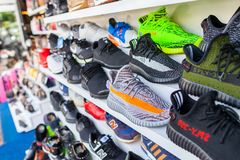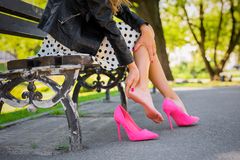FOR FITNESS OR FASHION, PROPER FIT, FORM & FUNCTION ARE VITAL
I have so much to say about this topic as feet have become my new favorite part of the body. At one point I hated feet, this is why I never went on to become a Physical Therapist. However, what I have learned over the years and what I want all of you to know is how important the feet are to our movement patterns.
Not only what you wear, but how you wear shoes matters:
Pick the right fit for your foot shape
Get properly, professionally measured and fitted for shoes
Realize your feet change as you age and act accordingly
Do not wear a shoe that is to big or to small
Ensure your shoes have a back to them
Your average flip flops are not advised as a daily wear
Limit pointing toe shoes/boots and avoiding high heels
Properly lace you sneakers for proper ankle support and heel lock
Let’s first look at the foot, its shape, and the biomechanics. The shape of the foot naturally is rounded over the toes, not pointed, not bent, and no toes overlapping. For proper biomechanics, an arch should be present when standing. If you have flat feet and doctors tell you to wear orthotics because you can’t fix a flattened arch, well that is wrong. ‘Flat’ out wrong. (That will be another discussion, for another time though).
Your foot muscles, tendons, and ligaments are part of a sling that connects the entire body as one unit. This is why hip pain, even shoulder pain, can be rooted in the foot/ankle area. Taking care of our feet has been overlooked, and they can become the culprit for so many injuries to other parts of the body.
The bones, tendons, and muscles of the foot can manipulated over time with poor fitting footwear. Bunions, hammer toe, calluses, neuromas, etc can all be caused by poor fitting footwear. It’s time to bust the myth that bunions are genetic, this couldn’t be further from the truth. When your feet are in shoes, your toes should still have space between them, able to wiggle around.
Poor fitting shoes which squeeze the toes out of alignment are what cause bunions and other toe deformities. Pointed toe shoes, for example, pull the big toe inward toward toes 2 and 3, while the little toe is pulled closer to the 4th toe, into a point. The big toe being squeezed in that position over time, years, is the main cause of bunions. Shoes that are too small jam the toes into the top portion of the shoe and over time can cause toe pain and hammer toe.
For our feet to stay as healthy as possible I recommend natural foot shopped shoes especially sneakers; stray away from the mainstream shoes stores to find natural shaped shoes. Especially when we exercise, there is a great deal of stress placed on our feet depending on the activity, so giving your feet the best possible footwear is the key to healthy feet, knees, and even hips.
Lets talk sneakers now. As a rule of thumb, sneaker that are worn regularly or used for exercise should be replaced every 6 months, and if walking or running in them, replace every 400 miles.
Sneakers wear out in the sole, and if you pronate or supinate, your shoes soles will wear out faster on one side more than the other and over time this will affect your gait, which eventually leads to feeling pain in the hips and low back, or other parts of your body. The shoe cushion or shock absorbers also wear out over time, another good reason to replace footgear regularly.
If you are reading this and you are still wearing sneakers from 2020, please toss them and get new ones asap. No thick soles, because you lose feeling with the ground, no heal to toe drop over 5mm because this puts the foot in an unnatural position and puts undo stress on the ball of the foot, and pay attention to how high the toe box curves up off the ground (toe spring) because it will put your toes in an unnatural position and could cause toe injures.
Running sneakers are not the same as tennis shoes- two different sports – cross training sneakers are for resistance training, riding the recumbent bike, or eliptical. All sneakers are not made alike either. Traditional sneaker brands like Nike, Reebok, Brooks, Saucony, Hoka, On Cloud, Asics, and others lack the natural foot shape design and tend to be narrow and squeeze the feet and toes. (Remember I mentioned earlier your toes should have space between them…both outside and inside of your footwear). These brands also have a high toe curve, which crunches the toes and does not allow the toes to work and become stronger.

Another issue with these brands is they have thick soles, advertising high cushion. However, the more material you put between your feet and the ground the less your body actually feels the ground, which can alter your gait and can create dysfunctional movement.
As mentioned, better options to choose from are brands with a natural foot shaped design. The following are just a few of the natural foot shaped shoes or barefoot designs I recommend: Altra, Topo, Vivo, Inov-8, and Xero. When you find a sneaker that you love, buy 2 pair at a time, that way you know you’ll always have a pair on reserve. Also, sneakers are like cars, they often upgrade models or get discontinued.
Treat your feet well and they will treat the rest of your body well.
Check out @Gaithappens on Insta for more info on all your foot health needs.
Jennifer Noll, MS
www.restoremvmt.com









